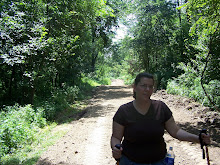
I'm normally not a huge fan of best of lists. Anytime you create a list of ten best, hundred best, or even 1001 best, you're going to have to leave some great books out. No list is perfect. But if I was looking for a pretty good canon of classic children's books, this would at least be a place to start. It has its missing titles, at least according to me, but it still has most of the books that I would consider must reads. I was fascinated by the width and breadth of the selection. And now have tons of new books to read.
The book, 1001 Children's Books You Must Read Before You Grow Up, covers children's books for every age group and from around the world. The book is broken up into something of age groups: 0-3, 3+, 5+, 8+, and 12+. Some of these are a little arbitrary with books like The Jungle Book appearing in the under 5+ section, the same section that housed Are You My Mother? and Blueberries for Sal. But then again I'm not a huge fan of age categorization of books anyway. I know that when I was young I was interested in books that were well above my age level. I'm sure there are kids in the same situation. Each title is reviewed with a plot summary and some information about either the history of the book or what made it great. There are a number of guest reviewers including authors like Margaret Atwood, Nick Butterworth, Judy Blume, and Lois Lowry. Contributors range from educational authors, librarians, journalists, and critics. The book itself is edited overall by Julia Eccleshare
In each age section, titles are presented chronologically. I was shocked at how old some of the classic titles are. We all know that Aesop's Fables are very old but I had no idea that The Swiss Family Robinson was actually written in 1812. The books continue up until mostly modern day with the newest title being the 2008 release of The Graveyard Book. Unlike other canons of children's literature, this list contains books from around the world and many that are not written in English. I went through the book several times and was amazed by the number of German and French titles that appeared. These are books that I'd never heard of. Yet in their own countries they are classics.
I consider myself somewhat well read when it comes to children's books but I have to admit that I probably have read less than half of the titles. I have read many of the 3+ and 5+ but many of the 12+ have escaped my notice. I'm not sure if I simply bypassed that age group or that that there were far more foreign titles in that section and I rarely expanded my reading beyond primarily English titles. I will be curious to see how many of the foreign titles I will be able to get my hands on. My plan is to attempt to read all 1001.
As I mentioned before I'm not a huge fan of lists. As I went through the book I could think of a few titles that had been excluded that I would consider classics. The list is a little light on the modern side. But one of the strengths of the book is that the editor is aware that she cannot include all the books that would be considered classics. This is solved by including additional titles at the base of some of the reviews. At the bottom of the review of Seuss's The Cat in the Hat is a listing of other books by Seuss. Similarly at the bottom of the review of The Happy Prince by Oscar Wilde is a list of other stories about princes. This book may well be one of the most well defined canons for the children's literature genre. I guarantee that readers will find old familiar favorites and exciting new books to check out.

check out our blog
ReplyDeletehttp://1001-childrens-books.blogspot.com/